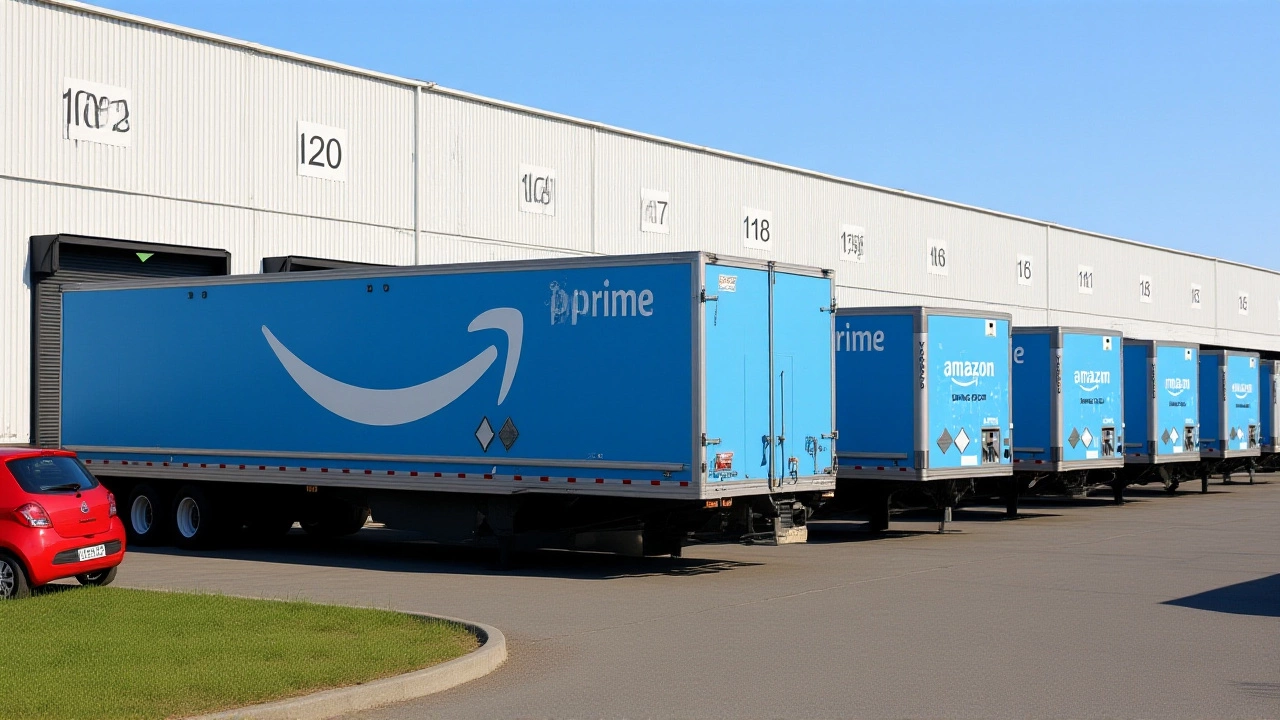When Amazon.com, Inc. agreed to a $2.5 billion deal with the Federal Trade Commission in September 2025, the consumer‑protection world sat up straight. The settlement—$1 billion in civil penalties and $1.5 billion earmarked for refunds—targets the way the e‑commerce giant enrolls shoppers into its Prime program, a move that could reshape subscription practices across the internet. The deal was announced from the FTC’s Washington, D.C., headquarters, and it still awaits a judge’s signature in the U.S. District Court for the District of Columbia before taking effect.
Why This Settlement Matters
The FTC says the case is the largest civil penalty ever imposed for violating a rule under the Restore Online Shoppers' Confidence Act (ROSCA). 35 million Americans allegedly found themselves signed up for Prime without a clear way to say “no,” and many struggled to cancel after the fact. The agency’s Bureau of Consumer Protection, Samuel Levine of Washington, D.C., explained that the deceptive language—phrases like “No, I don’t want Free Shipping”—violated ROSCA’s requirement for transparent enrollment.
Details of the Deal
Under the stipulated final order, Amazon must:
- Introduce a conspicuous “Decline Prime” button that cannot be hidden in fine print.
- Show clear disclosures about cost, renewal dates, auto‑renewal status, and cancellation steps at the moment of sign‑up.
- Match the sign‑up method with an equally simple cancellation flow—no extra clicks, no hidden fees.
- Fund an independent third‑party monitor who will oversee the $1.5 billion consumer‑redress distribution.
The civil penalty, amounting to $1 billion, eclipses the previous record of $700 million set against Epic Games in 2021. The restitution figure sits right behind the $1.9 billion awarded in the 2022 Twitter case, making this the second‑largest payoff in FTC history.
Key Players on Both Sides
Leading the FTC’s legal team were attorneys Jonathan Cohen, Evan Mendelson, and Olivia Jerjian, among others. Their argument hinged on the notion that Amazon’s "dark patterns"—design tricks that nudge users toward unwanted subscriptions—had crossed a legal line.
On the corporate side, Andrew R. Jassy, Amazon’s chief executive, released a brief statement saying the company would comply with every requirement and that the settlement demonstrates its commitment to “clear, honest customer experiences.” FTC Chair Lina M. Khan praised the agreement as a "landmark enforcement action" that sends a strong signal to any business thinking of hiding fees behind confusing UI.
Reactions from Consumers and Experts
Consumer‑advocacy groups welcomed the move but warned that the real test will be the speed of the refunds. A spokesperson for the Consumer Federation of America noted, "The $1.5 billion is massive, but if the distribution drags on for years, the impact diminishes." On the other hand, digital‑marketing analysts see a potential ripple effect: smaller e‑commerce sites may pre‑emptively redesign their subscription pages to avoid similar scrutiny.
Interestingly, a recent article by FFE SP.org claimed each affected shopper could claim $51, a figure that doesn’t line up with the FTC’s math (about $42.86 per person). The discrepancy sparked a flurry of social‑media chatter, with some users demanding clearer calculators from the FTC.
Broader Implications for the Tech Industry
This settlement lands just months after the FTC issued a 2022 policy statement condemning "dark patterns" across the digital marketplace. Legal scholars suggest that the case could become a benchmark for future ROSCA actions, especially as subscription models proliferate in streaming, software, and even grocery delivery services.
Financially, Amazon’s $1 billion fine will be absorbed into its $1.2 trillion annual revenue—a dent, but not a knockout. More significant is the operational overhaul: engineering teams will need to rewrite enrollment flows, QA will have to certify the new cancellation path, and compliance officers will coordinate with the court‑appointed monitor.
What’s Next?
The stipulated final order now sits on the docket of the U.S. District Court for the District of Columbia. A judge’s signature could come within weeks, though no exact date has been disclosed. Once approved, the independent supervisor will file quarterly compliance reports, starting 90 days afterward. The first wave of refunds is expected to roll out in early 2026, but the FTC has not committed to a specific timeline.
In the meantime, Amazon’s Prime membership base—over 200 million worldwide—will watch closely to see whether the promised “easy cancellation” lives up to the headline. If the changes stick, shoppers could finally have a clear “no, thanks” button, and other companies may think twice before employing similar design tricks.
Frequently Asked Questions
How will consumers receive the $1.5 billion refund?
An independent third‑party supervisor will verify eligibility and issue payments directly to bank accounts or debit cards on file with Amazon. The process is slated to begin after the court signs off on the order, with the first batch expected in early 2026.
What specific changes must Amazon make to its Prime sign‑up flow?
Amazon must add a clearly labeled “Decline Prime” button, display all material terms—price, renewal date, auto‑renewal status—up front, and ensure the cancellation method mirrors the enrollment path without hidden steps or fees.
Why is this settlement considered historic?
It combines the largest civil penalty ever for a ROSCA violation with the second‑largest restitution award in FTC history, setting a new benchmark for enforcement against deceptive subscription practices.
Will other companies face similar FTC actions?
Legal experts say the FTC’s 2022 policy on dark patterns signals a tougher stance, so firms that use confusing enrollment or cancellation designs can expect closer scrutiny and potential penalties.
How does the settlement affect Amazon’s global Prime members?
The FTC order applies only to U.S. consumers, but the required UI changes will be rolled out worldwide for consistency, meaning shoppers everywhere will see the new decline button and simplified cancellation steps.
